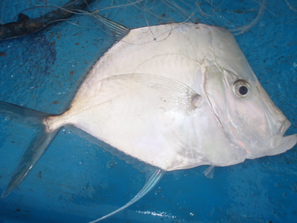A REVIEW OF TAURA SYNDROME VIRUS (TSV) - EXPLORING THE ROLE OF TRANSPOSABLE ELEMENTS-LIKE REPEATS IN NEW TSV ISOLATES, IN THE SHRIMP GENOME, AND IN THE PENAEID ANTI-VIRAL IMMUNE RESPONSE
Natalie Isaksson1-2, Laura Hake1, Acacia Alcivar-Warren1-3
1Biology Department, Boston College, Chestnut Hill, MA 02467 USA; 2Environmental Genomics, Inc., Southborough MA 01772 USA; 3FUCOBI (Fundacion para la Conservacion de Biodiversidad), Guayaquil, Ecuador; E-mail: [email protected]
1Biology Department, Boston College, Chestnut Hill, MA 02467 USA; 2Environmental Genomics, Inc., Southborough MA 01772 USA; 3FUCOBI (Fundacion para la Conservacion de Biodiversidad), Guayaquil, Ecuador; E-mail: [email protected]
Taura Syndrome Virus (TSV) was first discovered in 1992 in the Pacific whiteleg shrimp Penaeus (Litopenaeus) vannamei (Boone) of the Taura River in Taura, Ecuador. The virus has now spread to South and Central America, Mexico, the United States, and all across Southeast Asia. Shrimp farms have been impacted by the development of new strains of TSV as the virus mutates and causes mortality of farm stocks and subsequent economic losses in the billions of dollars. The growth and distribution of Specific Pathogen-Free (SPF) shrimp produced by the US Marine Shrimp Farming Program has been an effort to alleviate economic losses. Phylogenetic relationships between the isolates have been compared and new strains of TSV continue to appear across the world. Transposable elements-like repeats have been found in new isolates of the TSV genome and these findings raise questions about the role of transposable elements (TEs) in both the shrimp immunological response and in virus evolution. TEs are genome sequences that can jump from one section of chromosome to another and make up a large percentage of many eukaryotic genomes. There are two main classes of TEs, class I retrotransposons and class II DNA transposons. While historically TEs have been thought of as junk DNA serving no useful purpose, research has now shown that TEs are largely responsible for genomic variation and could play a vital role in speciation. Recent research points to a correlation between TE activation and levels of stress an organism is exposed to, be it environmental, physical or viral. There exists also a hypothesis for the mechanism by which transposable elements may be involved in shrimp acquiring tolerance to specific viral pathogens. Presented here is an in-depth review of all published information on TSV -including genomics and epigenetics-, a discussion of the role of TE-like repeats in both the shrimp immunological response to RNA viruses and in the evolution of new TSV isolates, as well as a summary of suggestions for future research in this field.
Fuente: https://www.was.org/WASMeetings/Meetings/ShowAbstract.aspx?Id=25511
Fuente: https://www.was.org/WASMeetings/Meetings/ShowAbstract.aspx?Id=25511



